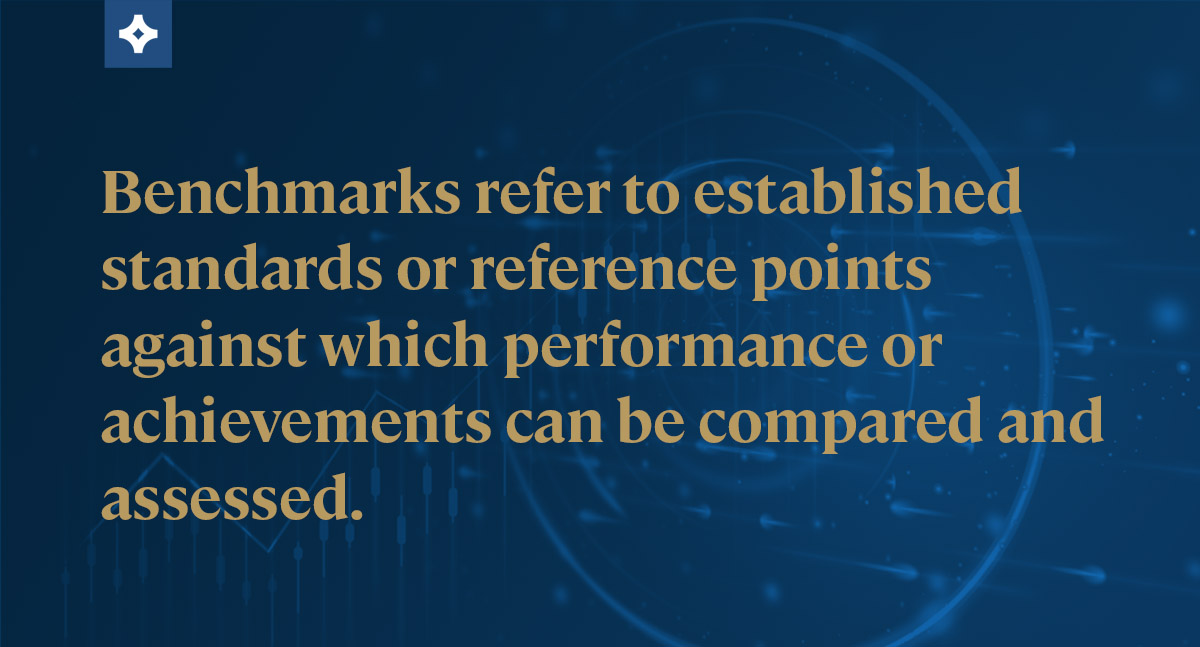What are benchmarks and how can school district leaders use them?

This article continues our series of posts defining the basic tenets of data science. Each post takes a seemingly simple and ubiquitous concept of data science and provides a short reminder of the defining and use for school district leaders. We’ve already explored the difference between data and analytics and defined predictive analytics.
Among these foundational concepts is the idea of “benchmarks.” For superintendents and executive leadership teams navigating K12 data and analytics to set goals and inform decisions, benchmarks provide a reliable compass. This article explores the significance, utility, and application of benchmarks in public education.
What are Benchmarks?
Benchmarks refer to established standards or reference points against which performance or achievements can be compared and assessed. In various domains, including education, finance, and technology, benchmarks serve as guideposts, providing a clear framework to evaluate the effectiveness of processes, strategies, or outcomes. They act as a baseline normative reference, target, or policy value offering clarity in gauging where one stands in relation to expected performance. By regularly comparing results or progress against these benchmarks, organizations and individuals can identify areas of strength and weakness, thus informing decisions and guiding improvement efforts.
The Role of Benchmarks in K12 Education
Setting Standards: Benchmarks can be used to set performance standards for students. For instance, there might be a benchmark score for a statewide reading test that students are expected to achieve by a certain grade.
Comparative Analysis: When evaluating the performance of different schools within a district, benchmarks offer a neutral ground. If School A has 70% of its students meeting a benchmark and School B has 80%, it provides evidence of where interventions might be necessary.
Monitoring Progress: Benchmarks don’t just provide a one-time snapshot; they help track progress over time. By comparing performance against benchmarks year over year, districts can gauge if they’re moving in the right direction.
Informing Strategies: Once benchmarks are set and data is analyzed in relation to them, educators can tailor teaching strategies and/or interventions to help students reach or exceed those benchmarks.
Setting Effective Benchmarks at School Districts
It’s not enough to simply have benchmarks; they need to be relevant, achievable, and continually assessed. When setting benchmarks:
- Ensure Relevance: Benchmarks should align with district goals, state standards, and the broader objectives of public education.
- Be Realistic: While it’s good to aim high, benchmarks should also be achievable. Setting the bar too high may demotivate educators and students alike.
- Stay Flexible: Regularly review and adjust benchmarks to keep them in line with changing goals and circumstances.
Benchmarks in Action
Consider the implementation of a new math curriculum across a district. The first step would be to establish benchmarks for what students should achieve by the end of the year using this curriculum. As the year progresses, student performance data is collected and compared against these benchmarks. By the year’s end, leadership can assess if the new curriculum had the desired impact. Did more students meet or exceed the benchmark compared to the previous curriculum? The answer will provide evidence-based insights that inform future decisions.
Benchmarks Help Communicate District Success
Data alone doesn’t always tell the right story. A point of data, in context with another, a benchmark, provides insight into success. As an example, a district might publish the headline “Our school received the Blue Ribbon award.” A better headline, using a benchmark, might read, “School receives prestigious Blue Ribbon award by US Dept. of Education, an elite designation for top 1% of schools.” Including a benchmark transformed this headline from a simple announcement to a celebration of achievement.
Benchmarks are more than just numbers; they’re beacons guiding the journey of educational improvement. They can also be used as a powerful communication tool. By understanding and effectively employing benchmarks, district leaders can ensure their strategies, decisions, and interventions are aligned with the ultimate goal: enhancing student outcomes.
ECRA’s Strategic Dashboard is a powerful tool created to help measure what matters and promote an evidence-based culture. When creating a dashboard, districts can use benchmarks to communicate results and effectively measure the success of a school district.







